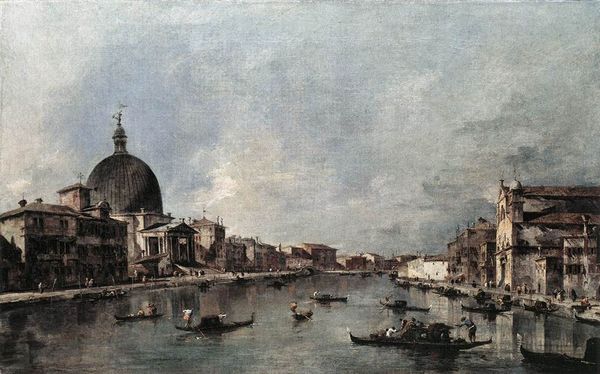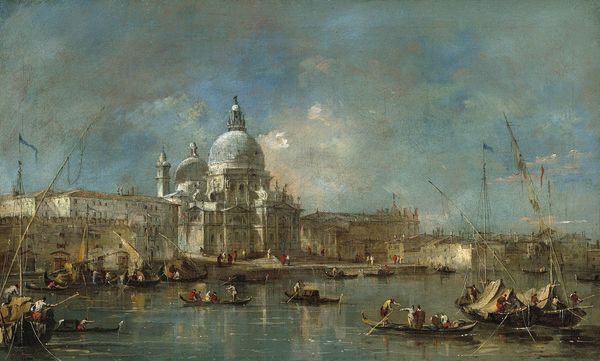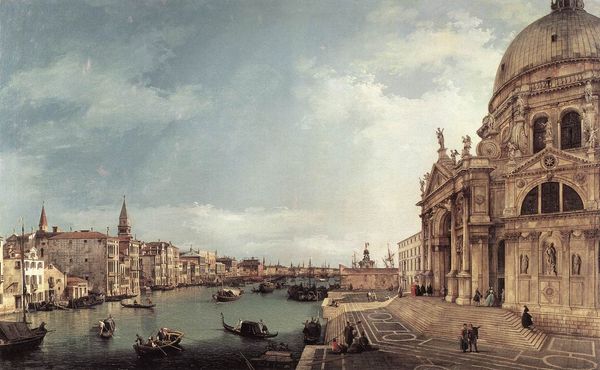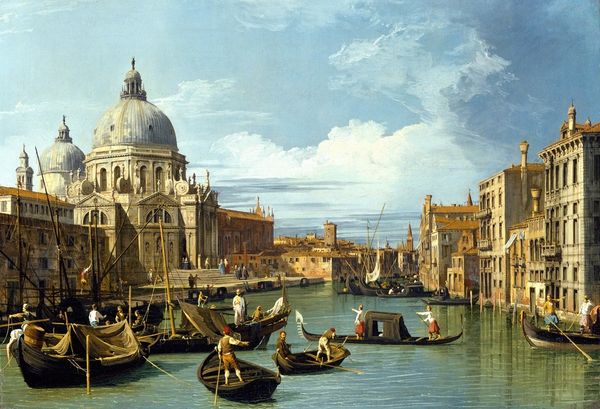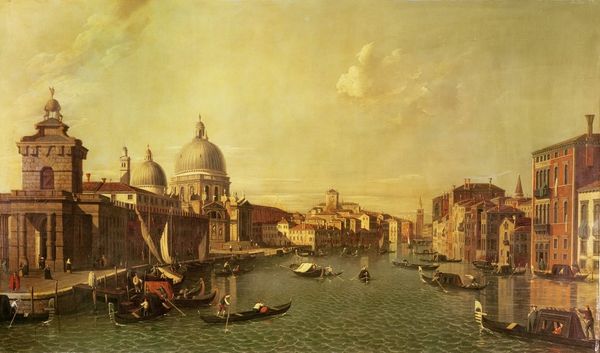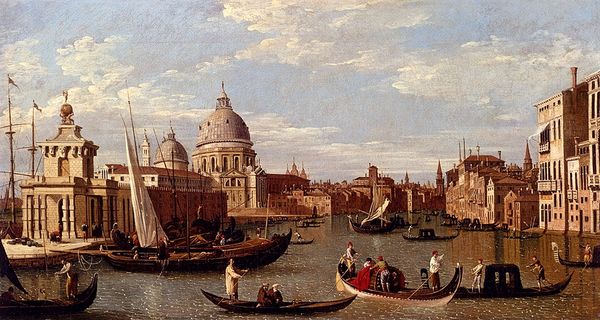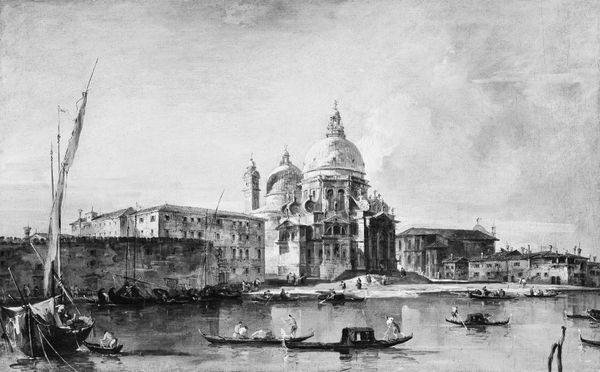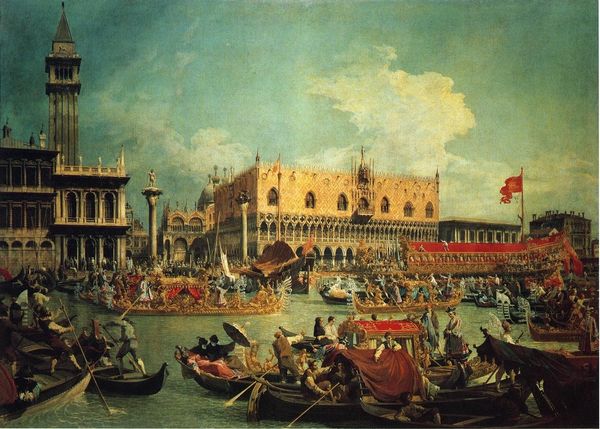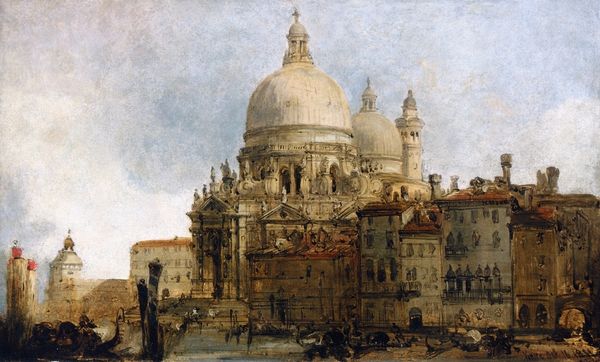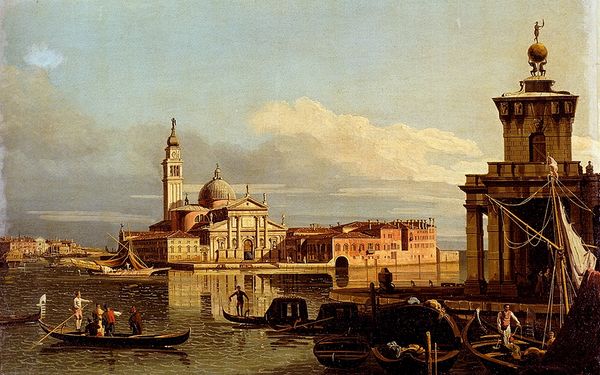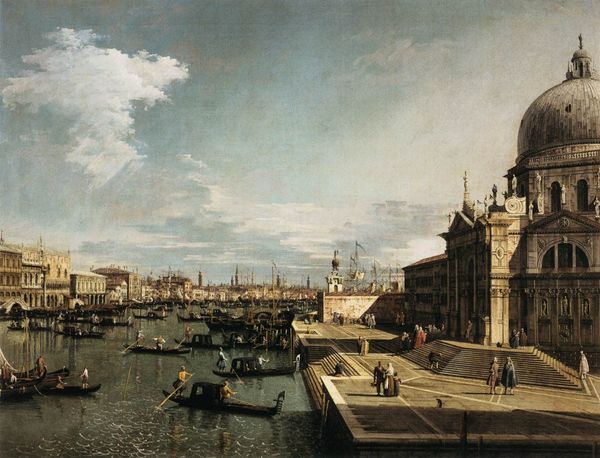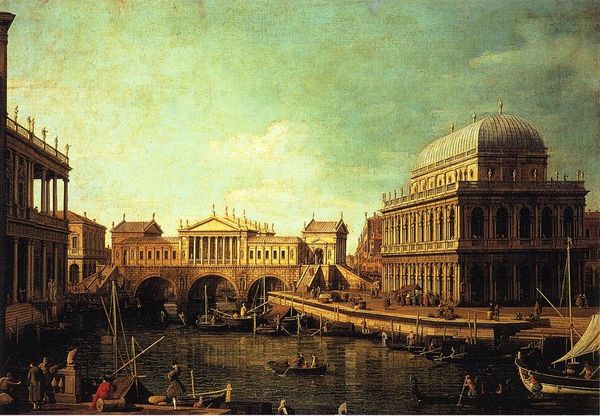
Dimensions: 68 x 100 cm
Copyright: Public domain
Curator: "The Doge at the Basilica of La Salute," an oil painting by Francesco Guardi dating back to 1770. It's currently housed here in the Louvre. Editor: The atmosphere is instantly striking – this overcast sky looms over what seems like a chaotic, crowded event unfolding before the majestic Basilica. I'm immediately drawn to the stark contrast between the monument and the gathering below, like a judgment in waiting. Curator: Interesting observation, yes. It’s significant because, while visually documenting Venice, it engages in larger narratives. Guardi often portrayed Venice not just as a beautiful cityscape, but as a political entity, and at that time, there were rumblings challenging power. Consider also the religious institution—it embodies a patriarchal structure in dialogue with Doge, its secular equivalent. The 'doge' embodies Venetian power and authority. What power dynamics are at play here? Editor: What symbols stand out to you? My eye keeps returning to the basilica itself. Its sheer size dwarfs the figures; it represents power, not just religiously, but also architecturally. Even its location at the entrance to the Grand Canal broadcasts Venice's dominance and status. I find myself questioning, "Who are these multitudes?" Curator: The Basilica Salute, as you noted, looms as a key symbol. It was built in thanks for deliverance from the plague, so consider its simultaneous visual and cultural function as reminder of civic obligation intersecting with state power structures. Now, note all the gondolas that stand near the waterfront and in the canals. Gondolas, historically, signify transit, trade, and social connection in Venice. It can signify an invitation to interrogate power dynamics across class and identity. Editor: You know, even in its detailed representation, the faces of the people are left indistinct—nearly all faceless subjects who partake in this display of political theatre. Curator: And that deliberate lack of specificity serves as an open field where questions can grow about collective identity. And with an interrogation of identity comes, for me, necessary discourse. We may use a contemporary lens to analyze intersectional narratives here by interrogating gender, social strata and class, all within that civic space and framed within Venice, too. What resonates about this portrayal to you personally? Editor: It makes me think of how spaces can define societies. How architecture becomes a character, not just backdrop. Curator: For me, it's about understanding that everything, even beauty, can carry layers of complex, sometimes contradictory, cultural messaging. The layers ask a viewer to understand that things aren’t necessarily what they seem.
Comments
No comments
Be the first to comment and join the conversation on the ultimate creative platform.
